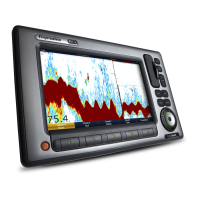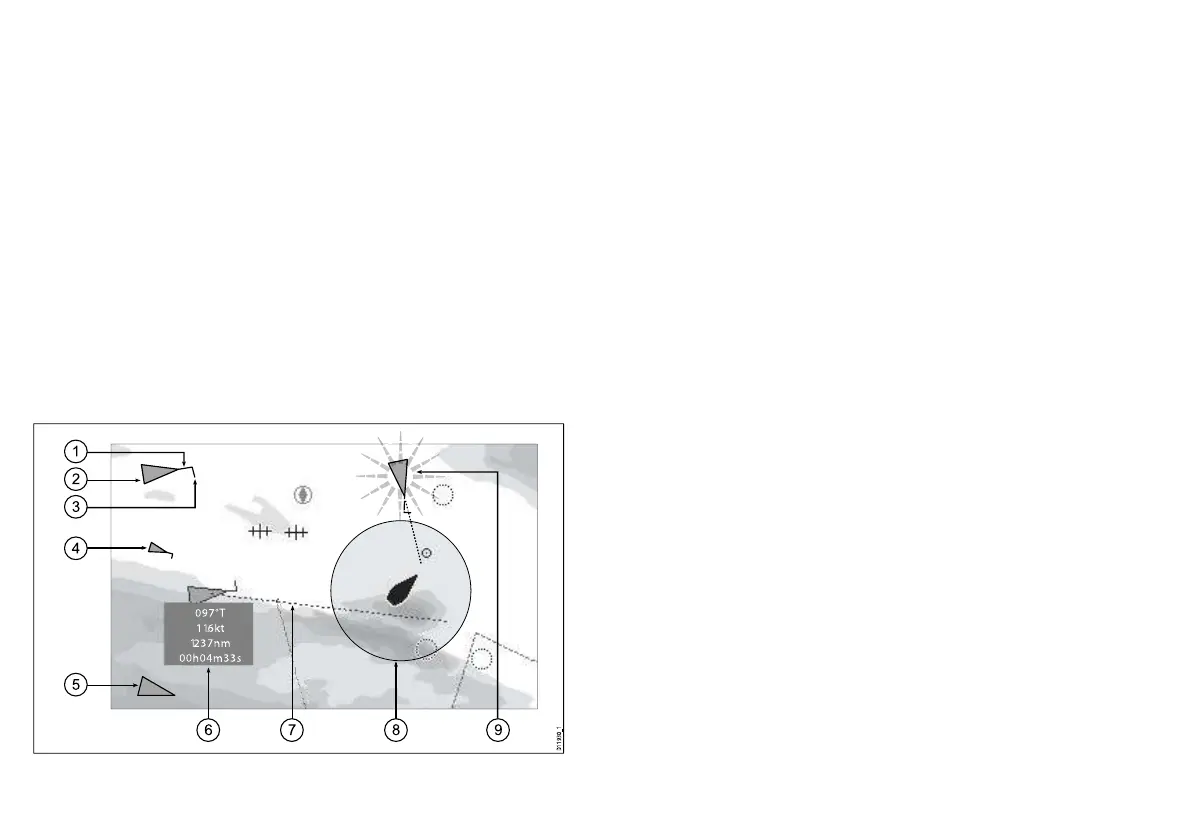10.1 AIS overview
The AIS feature enables you to receive information broadcast by
other vessels, and to add these vessels as targets in the chart and
radar applications.
With an optional AIS unit connected to your system you can:
• Display targets for any other AIS-equipped vessels.
• Display voyage information being broadcast by these targets,
such as their position, course, speed and rate-of-turn.
• Display basic or detailed information for each target vessel,
including safety-critical target data.
• Set up a safe zone around your vessel.
• View AIS alarm and safety-related messages.
AIS information is displayed in the form of an overlay in the chart
and radar applications. Additional data is displayed in a dialog box
in the chart application, for example:
1. Heading.
2. Large vessel.
3. Direction of turn.
4. Small vessel.
5. Transmitting target.
6. Safety-critical data.
7. COG / SOG vector.
8. Safe zone (dened by distance or time).
9. Dangerous target (ashes).
AIS-equipped vessels in the surrounding area are displayed in the
chart or radar application as triangular targets. Up to 100 targets
are displayed. As the vessel’s status changes, the symbol for the
target changes accordingly.
Vectors can be displayed for each target. These vectors indicate
the direction of travel and rate of turn of the vessel and the distance
it will travel over a specied period of time (COG / SOG vector).
Targets displayed with their vectors are referred to as ‘active targets’
and are scaled according to the size of the vessel. The larger the
vessel, the larger the target. You can either display all targets or
just dangerous targets.
How AIS Works
AIS uses digital radio signals to broadcast ‘real-time’ information
between vessels and shore-based stations via dedicated VHF radio
frequencies. This information is used to identify and track vessels in
the surrounding area and to provide fast, automatic and accurate
collision avoidance data. The AIS features complement the radar
application, as AIS can operate in radar blind spots and can detect
smaller vessels equipped with AIS.
150 E-Series Widescreen User reference

